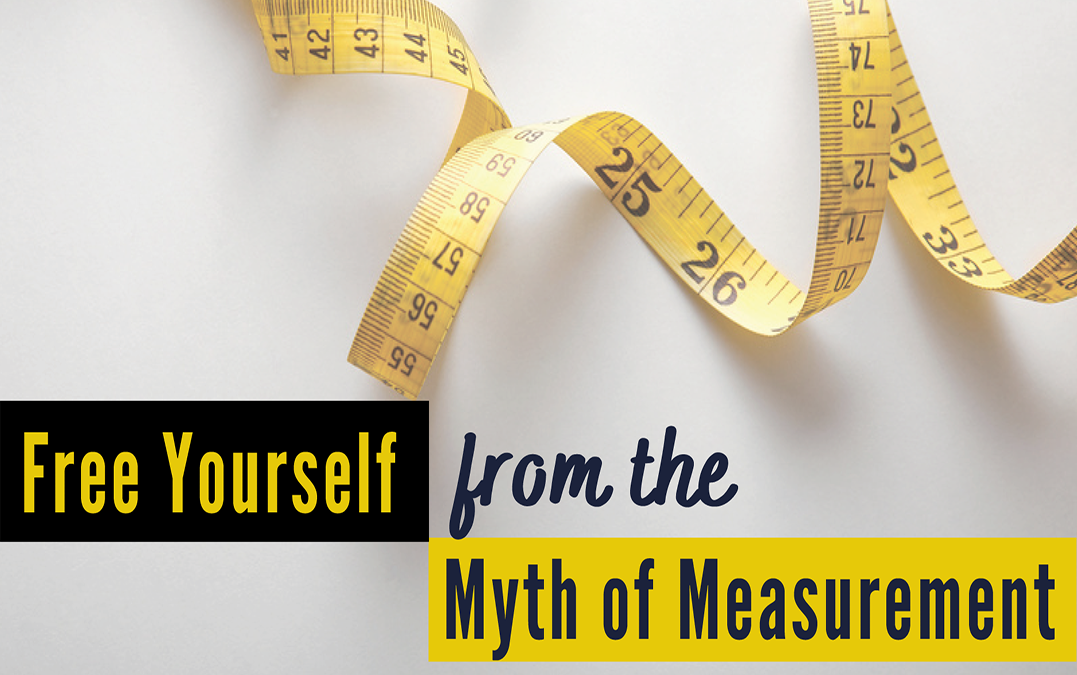
Leadership
We’ve all come across them. Those leaders who people naturally gravitate toward. Though it seems counterintuitive, the magnetic effect these leaders have on people is not because of how people feel about the leader. It’s because of how the leader makes people feel about themselves.
These leaders have mastered two basic facts about people. Fact 1: Every person matters. Fact 2: Every person wants to feel valued.
As Thanksgiving approaches, this is an excellent time to review the skills necessary to express meaningful gratitude to your team. Here are three skills that will yield the highest return:
1. Write a Note. Do not. I repeat. Do not mistake a thank you email for the real thing. Handwritten thank you notes are about relationships. Emails are about transactions. When you take a little extra time to write a personal message to team members to acknowledge your gratitude, you are also acknowledging that they are more than just a tool. They are human beings who matter and are valued. If your note writing skills are rusty, here’s a quick primer to get you started.
2. Make It a Habit. When it comes to business, we can fall into the trap of not seeing people who come in, get the job done, and don’t require constant attention. We take these employees for granted and just assume they don’t need a show of gratitude. To turn your attention to those who don’t ask for it, take a few minutes each morning to make a list of three team members you appreciate and why. Over time, you’ll begin to cultivate of habit of putting yourself in a gratitude mindset.
3. Give People Sincere Appreciation. People who don’t feel appreciated are often the first to burn out or jump ship. It only takes a minute to recognize a team member for making a positive contribution. But, doing it right requires more than the occasional “Attagirl!” Give timely and specific praise to show your team members how you value their contribution. Here’s a quick demo to show you how.
One final secret to mastering leadership gratitude – you can’t fake it. Leaders who genuinely care about their team members will invest the time to help each one feel valued. Make it a habit to sincerely recognize their efforts. Every day is an opportunity to help people see the best in themselves and feel like a valued contributor to the team.
Question: Have you had a leader who gave you a handwritten note of thanks? What did you learn from that experience?
Driven by the premise that excellence is the result of aligning people, purpose and performance, Center for Executive Excellence facilitates training in leading self, leading teams and leading organizations. To learn more, subscribe to receive CEE News!

Leadership, Mindfulness
This is traditionally the time of year when we start to shift our attention inward, to focus on family and on what we are grateful for. As we enter a transitional stage after a year of trauma and strain, more than ever we need ways to refresh our energies, calm our anxieties, and nurse our well-being. Here are three TED Talks that can help fill up your gratitude jar.
 In 2008, Hailey Bartholomew, who lives in Queensland, Australia, was struck with a bone-deep case of the blahs. A visit to a counselor led to her to taking a photo a day for an entire year of the sights that stirred her gratitude.
In 2008, Hailey Bartholomew, who lives in Queensland, Australia, was struck with a bone-deep case of the blahs. A visit to a counselor led to her to taking a photo a day for an entire year of the sights that stirred her gratitude.
What good things in your life would you see if you just took the time to look? This practice has an obvious perk: Whenever you need a reminder of what really matters to you , you’ll have your photos to look back on.
 A few years ago, author A.J. Jacobs, who is based in New York City, set out on a quest to thank everyone behind one thing in his life that he couldn’t function without: his daily coffee. He noticed that people treated baristas like vending machines.
A few years ago, author A.J. Jacobs, who is based in New York City, set out on a quest to thank everyone behind one thing in his life that he couldn’t function without: his daily coffee. He noticed that people treated baristas like vending machines.
The next time you get ready to make eye contact with a barista or cashier and thank them, consider also doing one or more of the following: remove your headphones or earbuds, smile, offer a sincere compliment.
 Benedictine monk and spiritual teacher David Steindl-Rast suggests that being grateful is as easy as crossing the street — and it consists of the same three steps: “Stop. Look. Go.” He adds, “But how often do we stop? … We have to get quiet. And we have to build stop signs into our lives.”
Benedictine monk and spiritual teacher David Steindl-Rast suggests that being grateful is as easy as crossing the street — and it consists of the same three steps: “Stop. Look. Go.” He adds, “But how often do we stop? … We have to get quiet. And we have to build stop signs into our lives.”
You can put up the kinds of signs that Br. Steindl-Rast suggests, are you could also stop to take photos of the things that provoke gratitude as Hailey Bartholomew does. Or, you might share a kind word with the person who gives you your morning coffee. Maybe you could set your phone to buzz during the day, and let that be your prompt to survey your surroundings and your life for what’s good.
Question: How can you fill your gratitude jar this month?
Driven by the premise that excellence is the result of aligning people, purpose and performance, Center for Executive Excellence facilitates training in leading self, leading teams and leading organizations. To learn more, subscribe to receive CEE News!

Leadership
Being a leader is sometimes frightening. The greater responsibility you have in an organization, the greater the impact your decisions will have. But, if you wait until you have all of the information needed to make the perfect decision, you really aren’t making a decision at all. You’re just stating a foregone conclusion. And that’s not leadership.
There will always be pieces of information or levels of impact that are unknown. With practice, you can learn to rely on a combination of experience, trust, and pure gut instinct to make the best decision available. Without practice, you’re subverting your ability to grow as a leader.
By taking on the challenge of doing things that are out of your comfort zone, you can accelerate your learning and growth as a leader. Here are some tips to help you work through your fears:
“Do one thing every day that scares you.” That quote, attributed to Eleanor Roosevelt, reminds us to challenge ourselves more. Whatever it is that scares you — public speaking, having a hard talk with a friend, making an appointment to see a counselor, or taking the leap into entrepreneurship — write them all down. Then challenge yourself to tackle these things with greater and greater frequency. There is real power in taking action on the things that you once feared the most.
Think through the worst-case scenario. “Fear is your friend,” says Tim Ferriss in his TED talk. “Fear is an indicator. Sometimes it shows you what you shouldn’t do. More often than not it shows you exactly what you should do. And the best results, the most enjoyable times, often come from asking a simple question: What’s the worst that can happen?”
Fear makes us do the opposite of what’s best for us. As with stress and other “negative” emotions, a certain amount of fear is healthy, even beneficial. Fear’s insidiousness hides on the invisible line between what’s healthy and what isn’t. The challenge is in determining when to listen to fear, and when to ignore it. That line — and therefore the determination whether to obey our fears or face them down — comes into view when we ask what’s in our best long-term interest.
The more you listen to fear, the more power you give it. Fortunately, the converse is true — the more you face fear down, the more control you have. Once we understand that, we can systematically expose ourselves to the things that scare us, and in that way, propel ourselves forward.
Question: What are some fears you’ve overcome as a leader?
Driven by the premise that excellence is the result of aligning people, purpose and performance, Center for Executive Excellence facilitates training in leading self, leading teams and leading organizations. To learn more, subscribe to receive CEE News!

Leadership, People
Yesterday, America lost a legendary public statesman and former Secretary of State, Colin Powell.
“Leadership is the art of accomplishing more than the science of management says is possible.” – Colin Powell
Since his retirement from public office in 2004, Powell has spent much of his time sharing his leadership knowledge with the business community. In his 2012 book, It Worked For Me, Powell attributed his success to hard work, straight talk, respect for others, and thoughtful analysis.
At the heart of the book are Powell’s “13 Rules” — ideas that he gathered over the years that formed the basis of his leadership principles.
Colin Powell’s 13 Rules of Leadership are listed below. They are full of emotional intelligence and wisdom for any leader.
- It ain’t as bad as you think! It will look better in the morning. Leaving the office at night with a winning attitude affects more than you alone; it conveys that attitude to your followers.
- Get mad then get over it. Instead of letting anger destroy you, use it to make constructive change.
- Avoid having your ego so close to your position that when your position falls, your ego goes with it. Keep your ego in check, and know that you can lead from wherever you are.
- It can be done. Leaders make things happen. If one approach doesn’t work, find another.
- Be careful what you choose. You may get it. Your team will have to live with your choices, so don’t rush.
- Don’t let adverse facts stand in the way of a good decision. Superb leadership is often a matter of superb instinct. When faced with a tough decision, use the time available to gather information that will inform your instinct.
- You can’t make someone else’s choices. You shouldn’t let someone else make yours. While good leaders listen and consider all perspectives, they ultimately make their own decisions. Accept your good decisions. Learn from your mistakes.
- Check small things. Followers live in the world of small things. Find ways to get visibility into that world.
- Share credit. People need recognition and a sense of worth as much as they need food and water.
- Remain calm. Be kind. Few people make sound or sustainable decisions in an atmosphere of chaos. Establish a calm zone while maintaining a sense of urgency.
- Have a vision. Be demanding. Followers need to know where their leaders are taking them and for what purpose. To achieve the purpose, set demanding standards and make sure they are met.
- Don’t take counsel of your fears or naysayers. Successful organizations are not built by cowards or cynics.
- Perpetual optimism is a force multiplier. If you believe and have prepared your followers, your followers will believe.
Colin Powell’s rules are short but powerful. Use them as a reminder to manage your emotions, model the behavior you want from others, and lead your team through adversity.
Question: Which of the 13 rules have you mastered? Which one can you work on today?
Driven by the premise that excellence is the result of aligning people, purpose and performance, Center for Executive Excellence facilitates training in leading self, leading teams and leading organizations. To learn more, subscribe to receive CEE News!

Leadership
Picture this. The CEO needs to make a decision about a cost-saving measure, and has turned to your team for advice. In support of the initiative to go paperless, she wants to eliminate either pens or pencils from use by employees across the organization. The program will be considered a success if it is rolled out in 30 days from today, 100% of employees have converted from the legacy writing instrument, and employee morale does not drop.
As ridiculous as this initiative may sound, parts of this scenario are all too familiar. Teams are often given limited time, little supporting data, and high expectations to make decisions that will have enterprise-wide impact.
What is also familiar is that teams are working on several other initiatives with compressed due dates. When the topic of pens versus pencils comes up on the team meeting agenda, only one member of the team has a strong position. Let’s call him the Advocate. The Advocate has studied the issue, has prior experience with a successful rollout of a similar initiative, and has drafted a plan to share with the team.
When the issue is brought up at a meeting, the team members are scattered in focus, and don’t practice the listening skills that would take advantage of the Advocate’s expertise and passion. Instead, they fall into four types of listeners: Ignore, Volley, Judge, and Apply.
Ignore. The Ignorer must attend the meeting, but obviously has other issues pressing for his attention. He’s buried in his phone, but throws out occasional comments like “Uh huh” or “Wait. What are we talking about?” from time to time. His guiding statement is, “You’re not important to me right now.”
Volley. This person doesn’t really agree or disagree with the Advocate about this issue, but wants to be a part of the conversation to get his own remarks on record. He’s preparing his comeback while the Advocate is talking, and interrupts in mid-sentence. His guiding statement is, “You think that’s right/wrong, I can top that.”
Judge. She strongly disagrees with the Advocate about this issue. She’s constantly fact-checking, and making assumptions and conclusions before she hears out the Advocate. Her guiding statement is, “Here’s your problem.”
Apply. This person considers the Advocate a subject matter expert and is here to learn, but not ask clarifying questions or offer feedback. She pays close attention as she downloads information from the Advocate and her other teammates. Her guiding statement is, “What can I take away and keep myself safe?”
Scenarios like this play out all too often in the workplace. The ability for teams to share information, and make decisions gets bogged down by the inability to listen. Instead, we accept unproductive listening behavior. We let Ignoring, Volleying, Judging, and Applying pass for listening. But to truly hear one another productively, we must practice listening with empathy, as follows:
Empathize. Team members don’t initially agree or disagree with the Advocate, but are present to the Advocate’s words and, more importantly, are open to being changed by what is said. They give their full attention to the Advocate’s words and body language. They stay curious, make an emotional connection, and set aside their own agenda. Their guiding statement is, “What are you experiencing?”
Listening with empathy takes practice. It requires being fully present to the thoughts and feelings of others, setting aside ego, and being open to information that may change your paradigm about an issue. As you go through your workday, take note of how many of the five levels of listening take place among your team members, and how your team would benefit by practicing listening with empathy.
Download our 5 Levels of Listening free resource. Ask yourself which of these 5 levels of Listening are you participating in. If you find yourself regularly falling into the Ignoring, Volleying, Judging, or Applying levels of listening, take some time to remember the prescription for that level, so that you can become a more Empathetic listener.
Question: Which of the five levels of listening do you practice in your team meetings?
Driven by the premise that excellence is the result of aligning people, purpose and performance, Center for Executive Excellence facilitates training in leading self, leading teams and leading organizations. To learn more, subscribe to receive CEE News!

Leadership
I recently completed a leadership course taught by Dr. Ronald Heifetz, Founder of the Center for Public Leadership at Harvard University. I took the Harvardx course to audit it for a client who wants to develop their high-potential employees. Not only did the course offer ways to mobilize people to tackle tough problems, but it also helped participants build the capacity to thrive through the complexities of change.
In his closing lecture, Dr. Heifetz told this personal story on the myth of measurement.
Years ago when my children were little, my parents came to visit. My father was one of the great brain surgeons of his time. He invented many of the instruments that are used in neurosurgery. So, in his lifetime he saved thousands of people’s lives.
When he retired from medicine, he went back to a childhood hobby. He always loved the stars and he thought he would introduce his grandchildren to the heavens. So, he went out and bought all the astronomy books he could find. But, he said to himself, ‘I don’t like any of these books.’ So, he wrote an astronomy book and sent it off to Cambridge University Press. They matched him with an illustrator and published his astronomy book, called A Walk Through the Heavens.
Soon after, the family had gathered at our house where a family friend was also staying. Since the friend was a teacher, I decided to give him a copy of my father’s astronomy book. I presented the book to the teacher when the family was gathered. When the teacher opened the book, he noticed that it was dedicated to all of the grandchildren in the family, including my two children, both of whom were standing close by.
The teacher turned to my father, the retired neurosurgeon and author, and asked him if he could borrow a pen. Everyone in the room assumed that the teacher was going to ask the author to sign the book. Instead, he got down on his knee, opened the book to the dedication page, and asked my two children to sign the book.
I looked at my father to see his reaction and saw the beginning of tears in his eyes. “I realized that 40 years of saving lives could not be measured against the meaning of that moment.”
In the business world, we get caught up by measuring ourselves – KPI’s, OKR’s, performance ratios, etc. – but, in the end, you can’t measure impact. One of the ways to prevent burnout is to free yourself from the myth of measurement. Take time to remind yourself of the good you are doing that’s beyond measure. Give yourself permission to take pleasure in the lives you’ve touched, the light you turned on in someone else’s eyes, the elevator button you pushed back down so that others can grow.
Question: What are some ways to buoy yourself when you feel you’re not making measurable progress?









